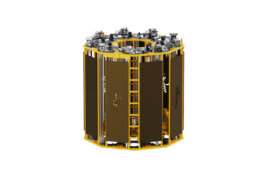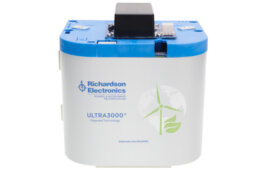
Windspect uses a 7-rotor copter to gather visual and other information when inspecting turbine rotors. A collision avoidance systems keep the units safe when flying in modest gusts.
More than one drone company will be showing its wares at AWEA’s Windpower 2015. Drones, for our purposes, are really unmanned aerial vehicles capable of carrying a high resolution video cameras and soon several sensors that might spot a range of problems in wind turbine blades. Until recently, a reliable blade inspection had to be done by a wind tech hanging from a rope, and he might take 6 hours to inspect one turbine.
The latest company to offer these services, WindSpect, will be “flying” its copter at booth 1729. (It’s tethered) A wind technician with his new robot buddy will be able to do the inspection job, all three blades and with the tech’s guidance, in about 90 minutes. At the end of a flight, the technician will remove an SD card from the drone and put it into the company computer for a detailed report on what was spotted. The software will recognize flaws in the blade, mark their location as meters from the tip or ground, and identify the type of flaw, such as surface impact, cracks, or leading edge erosion and more.
The capability is just the tip of the possibility iceberg. More sensors in development might identify water in the blade or spot where the laminations are coming apart. And the next-gen software might let the drone inspect all three blades without positioning each into the 6 o’clock position.
This is good news for the wind industry because the speed, accuracy, and detail will shave more off O&M costs making wind generated power all the more competitive with other generators of electricity. My crystal ball says in a few years the drones will make elementary repairs.
Filed Under: News, O&M



